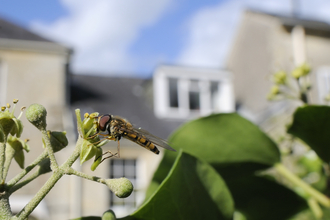
Crane fly (Tipula luna) ©Chris Lawrence
Daddy longlegs
Flitting about the house in summer, the gangly, brown daddy longlegs is familiar to many of us. They are a valuable food source for many birds.
Scientific name
TipulidaeWhen to see
June to SeptemberSpecies information
Category
Statistics
Body length: 1.6cmLeg length: 5cm
Conservation status
Common.
About
The daddy longlegs is actually a large type of cranefly, of which there are 94 species in the UK. It is familiar to us in its adult form as the gangly insect that flits around our homes in summer. As a larva, it is a grey grub (also known as a 'leatherjacket') that lives underground, feeding on plants stems and roots. This habit makes it an unpopular species with gardeners as it can leave bare patches of lawn, and can also become an agricultural pest. The adults are on the wing during the late summer and are common in gardens and fields, often coming indoors. They rarely feed at this time, concentrating on mating and laying their eggs among the grass.The urban myth that daddy longlegs are venomous is just that - a myth! It's true that they cannot bite, but the venomous rumour is likely to have been due to its confusion with certain species of spiders.
How to identify
The adult daddy longlegs is a brown, long-bodied insect, with translucent wings and very long legs, which easily fall off if handled. As a group, craneflies are unmistakeable, although telling the different species apart can be very difficult and often requires a microscope.Distribution
Widespread.Did you know?
If you look closely, the male has a square-ended body, but the female has a long, sharp-ended body - this stinger-like 'tail' is her ovipositor, which she uses to lay her eggs in the ground.How people can help
The Wildlife Trusts work closely with farmers, landowners and planners to ensure that our wildlife is protected and to promote wildlife-friendly practices. By working together, we can create Living Landscapes: networks of habitats stretching across town and country that allow wildlife to move about freely and people to enjoy the benefits of nature. Support this greener vision for the future by joining your local Wildlife Trust.
Matthew Roberts
Wildlife gardening
Help wildlife in your garden
Buff-tailed bumblebee © Vaughn Matthews



